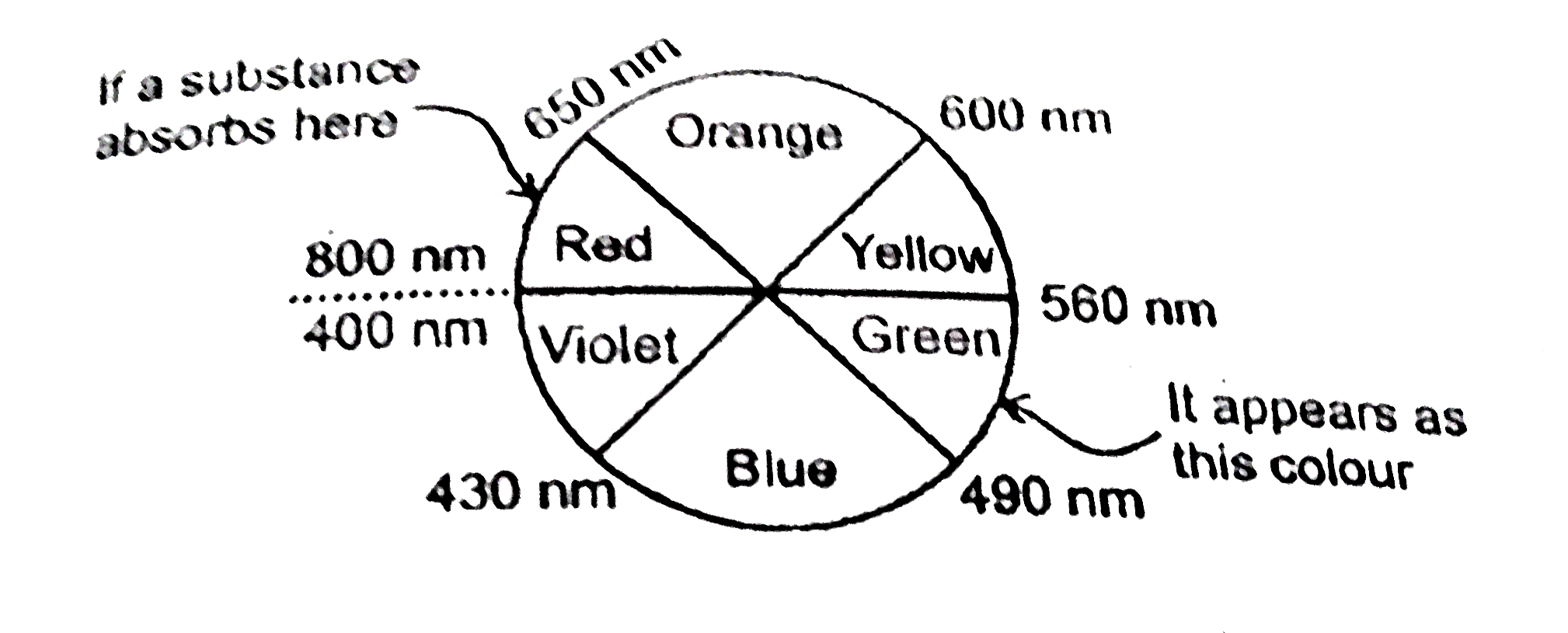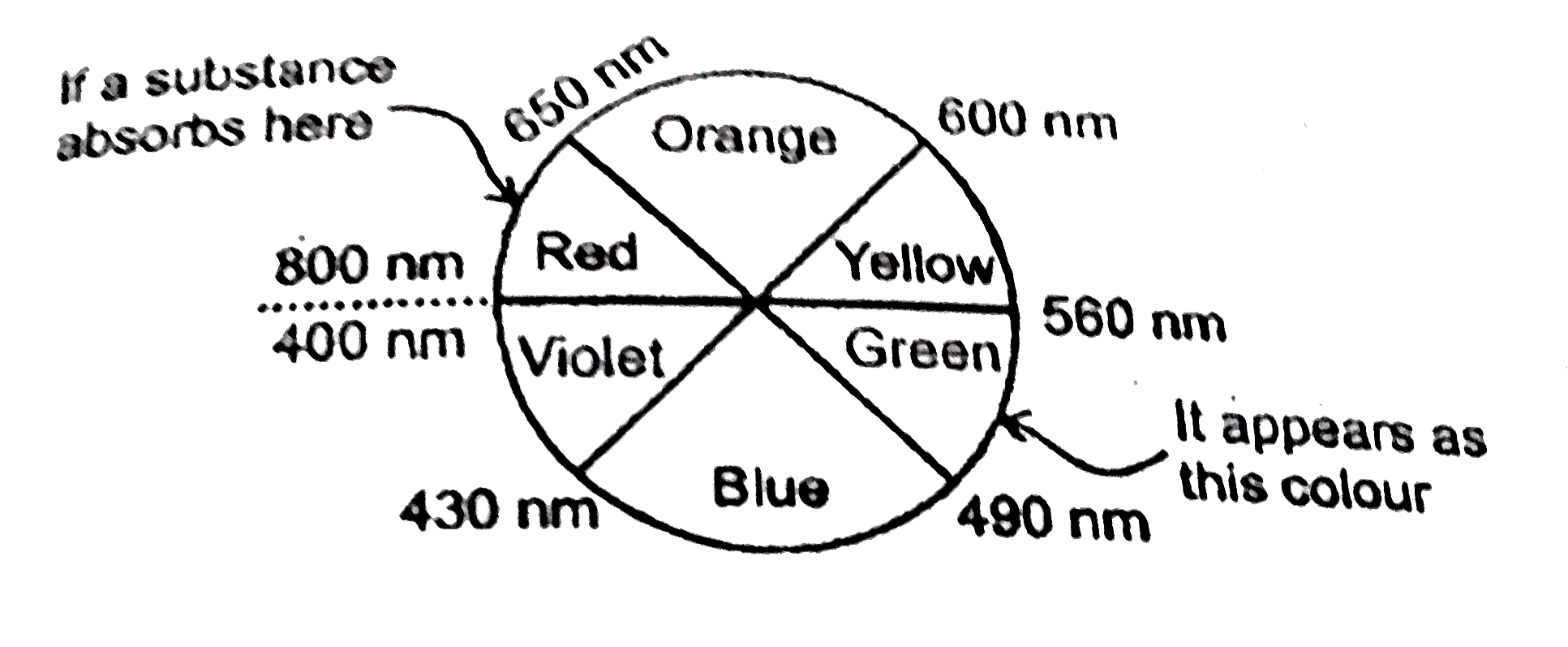As originally developed, cystal field theory was used to describe the electronic structure of metal ion crystals, where they are surrounded by oxide ions or other anions that create an electrostatic filed with symmetry dependent on the crystal structure.
If for the complex K4[FeL6] the value of Δ0=22000 cm−1. Find out the value of crystal pairing energy. Where L is uninegative monodentate ligand.
−46200 cm−1
−52800 cm−1
+2200 cm−1
−22200 cm−1
The correct Answer is:B
K4[+2FeL6]d6→t2,2,22geg0,0
CFSE=−0.4×6Δ0=−2.4Δ0
⇒CFSE=−2.4×22000=−52800cm−1
Topper's Solved these Questions
- COORDINATION COMPOUNDSBOOK - GRB PUBLICATIONCHAPTER - COORDINATION COMPOUNDSEXERCISE - COMPREHENSION 38
2 Videos
- COORDINATION COMPOUNDSBOOK - GRB PUBLICATIONCHAPTER - COORDINATION COMPOUNDSEXERCISE - COMPREHENSION 39
2 Videos
- COORDINATION COMPOUNDSBOOK - GRB PUBLICATIONCHAPTER - COORDINATION COMPOUNDSEXERCISE - COMPREHENSION 36
2 Videos
- CHEMICAL KINETICSBOOK - GRB PUBLICATIONCHAPTER - CHEMICAL KINETICSEXERCISE - Subjective Type
63 Videos
- D-BLOCK ELEMENTSBOOK - GRB PUBLICATIONCHAPTER - D-BLOCK ELEMENTSEXERCISE - Subjective Type
18 Videos
Similar Questions
Crystal field theory views the bonding in complexes as arising from electrostatic interaction and considers the effect of the ligand charges on the energies of the metal ion d-orbitals
In this theory, a ligand lone pair is modelled as a point negative charge that repels electrons in the d-orbitals of the central metal ion.The theory concentrated on the resulting splitting of the d-orbitals in two groups with different energies and used that splitting to rationalize and correlate the optical spectra,thermodynamic stability, and magnetic properties of complexes.This energy splitting between the two sets of d-orbitals is called the crystal field splitting Δ.
In general, the crystal field splitting energy Δ corresponds to wavelenght of light in visible region of the spectrum, and colours of the complexes can therefore be attributed to electronic transition between the lower and higher energy sets of d-orbitals.
In general, the colour that we see is complementry to the colour absorbed.

Different metal ions have different value of Δ, which explains why their complexes with the same ligand have different colour.
Similarly the crystal field splitting also depends on the nature of ligands and as the ligand for the same metal varies from H2O to NH3 to ethylenediamine, Δ for complexes increase.Accordingly, the electronic transition shifts to higher energy (shorter wavelength) as the ligand varies from H2O from NH3 to en, thus accounting for the variation in colour.
Crystal field theory accounts for the magnetic properties of complexes in terms of the relative values of Δ and the spin pairing energy P. Small Δ values favour high spin complexes, and large Δ values favour low spin complexes.
Which of the following complexes are diamagnetic ?
[Pt(NH3)4]2+[Co(SCN)4]2−[Cu(en)2]2+[HgI4]2−square planartetrahedralsquare planartetrahedral(i)(ii)(iii)iv
View SolutionCrystal field theory views the bonding in complexes as arising from electrostatic interaction and considers the effect of the ligand charges on the energies of the metal ion d-orbitals
In this theory, a ligand lone pair is modelled as a point negative charge that repels electrons in the d-orbitals of the central metal ion.The theory concentrated on the resulting splitting of the d-orbitals in two groups with different energies and used that splitting to rationalize and correlate the optical spectra,thermodynamic stability, and magnetic properties of complexes.This energy splitting between the two sets of d-orbitals is called the crystal field splitting Δ.
In general, the crystal field splitting energy Δ corresponds to wavelenght of light in visible region of the spectrum, and colours of the complexes can therefore be attributed to electronic transition between the lower and higher energy sets of d-orbitals.
In general, the colour that we see is complementry to the colour absorbed.

Different metal ions have different value of Δ, which explains why their complexes with the same ligand have different colour.
Similarly the crystal field splitting also depends on the nature of ligands and as the ligand for the same metal varies from H2O to NH3 to ethylenediamine, Δ for complexes increase.Accordingly, the electronic transition shifts to higher energy (shorter wavelength) as the ligand varies from H2O from NH3 to en, thus accounting for the variation in colour.
Crystal field theory accounts for the magnetic properties of complexes in terms of the relative values of Δ and the spin pairing energy P. Small Δ values favour high spin complexes, and large Δ values favour low spin complexes.
Which of the following statements is incorrect ?
View Solution
Knowledge Check
As originally developed, cystal field theory was used to describe the electronic structure of metal ion crystals, where they are surrounded by oxide ions or other anions that create an electrostatic filed with symmetry dependent on the crystal structure.
Total number of nodal planes of the orbitals involved in hybridisation of central metal ion in complex [MnO4]− is :A6B4C2D3As originally developed, cystal field theory was used to describe the electronic structure of metal ion crystals, where they are surrounded by oxide ions or other anions that create an electrostatic filed with symmetry dependent on the crystal structure.
Total number of nodal planes of the orbitals involved in hybridisation of central metal ion in complex [MnO4]− is :A6B4C2D3Crystal field theory views the bonding in complexes as arising from electrostatic interaction and considers the effect of the ligand charges on the energies of the metal ion d-orbitals
In this theory, a ligand lone pair is modelled as a point negative charge that repels electrons in the d-orbitals of the central metal ion.The theory concentrated on the resulting splitting of the d-orbitals in two groups with different energies and used that splitting to rationalize and correlate the optical spectra,thermodynamic stability, and magnetic properties of complexes.This energy splitting between the two sets of d-orbitals is called the crystal field splitting Δ.
In general, the crystal field splitting energy Δ corresponds to wavelenght of light in visible region of the spectrum, and colours of the complexes can therefore be attributed to electronic transition between the lower and higher energy sets of d-orbitals.
In general, the colour that we see is complementry to the colour absorbed.

Different metal ions have different value of Δ, which explains why their complexes with the same ligand have different colour.
Similarly the crystal field splitting also depends on the nature of ligands and as the ligand for the same metal varies from H2O to NH3 to ethylenediamine, Δ for complexes increase.Accordingly, the electronic transition shifts to higher energy (shorter wavelength) as the ligand varies from H2O from NH3 to en, thus accounting for the variation in colour.
Crystal field theory accounts for the magnetic properties of complexes in terms of the relative values of Δ and the spin pairing energy P. Small Δ values favour high spin complexes, and large Δ values favour low spin complexes.
The [Ti(NCS)6]3− ion exhibits a single absorption band at 544 nm.What will be the crystal field splitting energy (in kJ mol−1) of the complex ? (h=6.626×10−34J.s,C=3.0×105m/s,NA=6.02×1023 ions/mole.A240B220C270D250
Read the passage given below and answer the following questions :
The crystal field theory (CFT) is an electrostatic model which considers the metal-ligand bond to be ionic arising purely from electrostatic interactions between the metal ion and the ligand. Ligands are treated as point charges in case of anions or dipoles in case of neutral molecules. The five d orbitals in an isolated gaseous metal atom/ion have same energy, i.e., they are degenerate. This degeneracy is maintained if a spherically symmetrical field of negative charges surrounds the metal atom/ ion. However, when this negative field is due to ligands (either anions or the negative ends of dipolar molecules like NH3 and H2O) in a complex, it becomes asymmetrical and the degeneracy of the d orbitals is lifted. It results in splitting of the d orbitals.
The CFSE for octahedral [CoCl6]4− is 18,000cm−1. The CFSE for tetrahedral [CoCl4]2− will be
View SolutionValence bond theory for bonding in transition metal complexes was developed by Pauling. From the valence bond point of view, formation of a complex involves reaction between Lewis bases (ligands) and a Lewis acid (metal atom or metal ion) with the formation of coordination covalent (or dative) bonds between them. The model utilizes hybridization of metal s, p and d valence orbitals to account for the observed structures and magnetic properies of complexes.
Valence bond theory is able to deal satisfactorily with many stereo chemical and magnetic properies but is has nothing to say about electronic spectra or the reason for the kinetic inertness of chromium (III) and low spin cobalt (III) octahedral complexes. To understand this and more other features of transition metal we must turn to other theories like crystal field theory etc.
Pure crystal field theory assumes that the only interaction between the metal ion and the ligands is an electrostatic or ionic one with the ligands being regarded as negative point charges. This theory is quite successful in interpreting many important properties of complexes.
Select the correct statement about the crystal field theory.
View SolutionValence bond theory for bonding in transition metal complexes was developed by Pauling. From the valence bond point of view, formation of a complex involves reaction between Lewis bases (ligands) and a Lewis acid (metal atom or metal ion) with the formation of coordination covalent (or dative) bonds between them. The model utilizes hybridization of metal s, p and d valence orbitals to account for the observed structures and magnetic properies of complexes.
Valence bond theory is able to deal satisfactorily with many stereo chemical and magnetic properies but is has nothing to say about electronic spectra or the reason for the kinetic inertness of chromium (III) and low spin cobalt (III) octahedral complexes. To understand this and more other features of transition metal we must turn to other theories like crystal field theory etc.
Pure crystal field theory assumes that the only interaction between the metal ion and the ligands is an electrostatic or ionic one with the ligands being regarded as negative point charges. This theory is quite successful in interpreting many important properties of complexes.
Select the correct statement about the crystal field theory.
View SolutionRead the passage given below and answer the following questions :
The crystal field theory (CFT) is an electrostatic model which considers the metal-ligand bond to be ionic arising purely from electrostatic interactions between the metal ion and the ligand. Ligands are treated as point charges in case of anions or dipoles in case of neutral molecules. The five d orbitals in an isolated gaseous metal atom/ion have same energy, i.e., they are degenerate. This degeneracy is maintained if a spherically symmetrical field of negative charges surrounds the metal atom/ ion. However, when this negative field is due to ligands (either anions or the negative ends of dipolar molecules like NH3 and H2O) in a complex, it becomes asymmetrical and the degeneracy of the d orbitals is lifted. It results in splitting of the d orbitals.
A chelating agent has two or more than two donor atoms to bind to a single metal ion. Which of the following is not a chelating agent ?
View SolutionRead the passage given below and answer the following questions :
The crystal field theory (CFT) is an electrostatic model which considers the metal-ligand bond to be ionic arising purely from electrostatic interactions between the metal ion and the ligand. Ligands are treated as point charges in case of anions or dipoles in case of neutral molecules. The five d orbitals in an isolated gaseous metal atom/ion have same energy, i.e., they are degenerate. This degeneracy is maintained if a spherically symmetrical field of negative charges surrounds the metal atom/ ion. However, when this negative field is due to ligands (either anions or the negative ends of dipolar molecules like NH3 and H2O) in a complex, it becomes asymmetrical and the degeneracy of the d orbitals is lifted. It results in splitting of the d orbitals.
An aqueous pink solution of cobalt(II) chloride changes to deep blue on addition of excess of HCl. This is because _________.
View Solution
